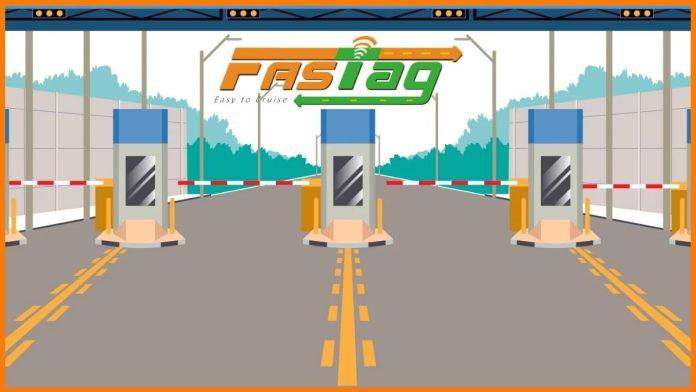In today’s fast-paced world, the burgeoning infrastructure entails efficient and rapid transportation systems. An integral part of maintaining this infrastructure is the toll tax system. Toll tax is a fee levied on vehicles that use specific roads or highways, which helps in the upkeep, maintenance, and expansion of these key transportation routes. One notable example is the Nelamangala toll, a significant toll plaza on the Bangalore-Mumbai National Highway (NH-48), which sees a substantial amount of daily vehicular movement. Traditionally, toll taxes were collected manually, leading to long queues, wasted fuel, and time. However, with the advent of FASTag, the entire toll collection process is witnessing a transformational change.
Understanding Toll Tax
The concept of toll tax has been around for centuries. Historically, toll gates were established to collect fees for the maintenance of roads and bridges. Today, the purpose remains the same but is far more organised and systematic. Toll taxes are used to fund the construction, maintenance, and operation of highways, expressways, and nearby infrastructure. These funds ensure that the roadways remain in excellent condition and can handle the increasing load of heavy traffic.
The collected money also plays a crucial role in reducing the financial burden on government bodies, enabling them to invest in new projects. A well-maintained roadway infrastructure promotes economic growth by facilitating smoother and faster movement of goods and people. The Nelamangala toll, for example, is a critical point on a heavily trafficked route, contributing significantly to the region’s economic activities by minimizing road wear and tear and ensuring smooth commutes.
From Manual to Digital: The Evolution of Toll Collection
Traditionally, toll collection was manual, involving a slow and cumbersome process of stopping vehicles, handing over cash, and waiting for change. This method not only caused long delays and traffic jams but also contributed to excessive fuel consumption and pollution.
The need for a more efficient system saw the advent of Electronic Toll Collection (ETC), an innovation aimed at automating this process. In India, this digital leap manifested in the form of FASTag, a technology designed to revolutionize toll collection on National Highways.
What is FASTag?
FASTag is an electronic toll collection system that employs Radio Frequency Identification (RFID) technology to automatically deduct toll charges from a prepaid or savings account linked to the FASTag sticker affixed to the vehicle’s windshield. This system is essentially a digital facilitator, ensuring that vehicles move seamlessly through toll plazas without halting.
When a vehicle equipped with a FASTag passes through a toll plaza, the RFID scanner scans the tag and automatically deducts the appropriate toll amount from the linked account. The vehicle can continue its journey without the need to stop, reducing both congestion and emissions.
How FASTag is Revolutionizing Toll Collection
Here are some ways in which FASTag has revolutionized the toll tax collection process:
1. Reduced Traffic Congestion
One of the immediate benefits of FASTag is the considerable reduction in traffic congestion at toll plazas. With the automated toll deduction system, vehicles no longer need to stop, thereby cutting down wait times and enhancing the overall driving experience. High-traffic areas like the Nelamangala toll have seen dramatic improvements in throughput, making journeys quicker and more efficient.
2. Savings on Fuel and Time
Time saved is fuel saved. With vehicles not having to idle in long queues, there is a substantial reduction in fuel consumption, which translates to cost savings for drivers and a positive environmental impact due to lower emissions.
3. Transparency and Accountability
FASTag provides a transparent and tamper-proof system for toll collection. It minimizes the chances of human error and corruption that were prevalent in manual toll collection systems. Users can monitor their toll transactions in real-time, ensuring transparency and accountability.
4. Reduced Operational Costs
Automated toll collection systems like FASTag reduce the need for large manpower at toll plazas, thus cutting down operational costs significantly. The savings from reduced labour costs can be channeled into better road maintenance and further infrastructure development.
5. Enhanced Data Collection
FASTag enables the collection of valuable data on traffic patterns, vehicle types, and peak traffic hours. Such data can be analysed to improve roadways, plan expansions, and implement better traffic management solutions.
6. Interoperability
FASTag’s interoperability allows it to be used across various toll plazas in the country, regardless of the operator. This universal acceptability adds to the convenience for road users, who no longer need to keep multiple tags or deal with different toll collection systems.
The Future of Toll Collection
The success of FASTag sets the stage for the future of toll collection in India. As the system matures, the technology is expected to incorporate additional features like integration with parking fees, drive-through services at retail outlets, and even more expansive usage across different types of transportation networks. Using tools like the Bajaj Finserv app, users can easily manage their FASTag accounts and keep track of toll payments.
In the context of high-traffic areas like the Nelamangala toll, continued advancements and adoption of FASTag will significantly enhance the efficiency of travel, contributing positively to both economic and environmental aspects.
Conclusion
The evolution of toll tax collection from manual methods to sophisticated digital systems like FASTag marks a significant milestone in modern transportation infrastructure. By addressing congestion, reducing emissions, ensuring transparency, and cutting operational costs, FASTag is not just a tool for toll collection but a catalyst for broader improvements in road transit.
For regions like the Nelamangala toll area and beyond, FASTag represents a leap towards a more efficient, tech-savvy, and sustainable future in road travel. As this technology continues to evolve, it promises to bring even more convenience and improvements to the everyday commuter’s life.
